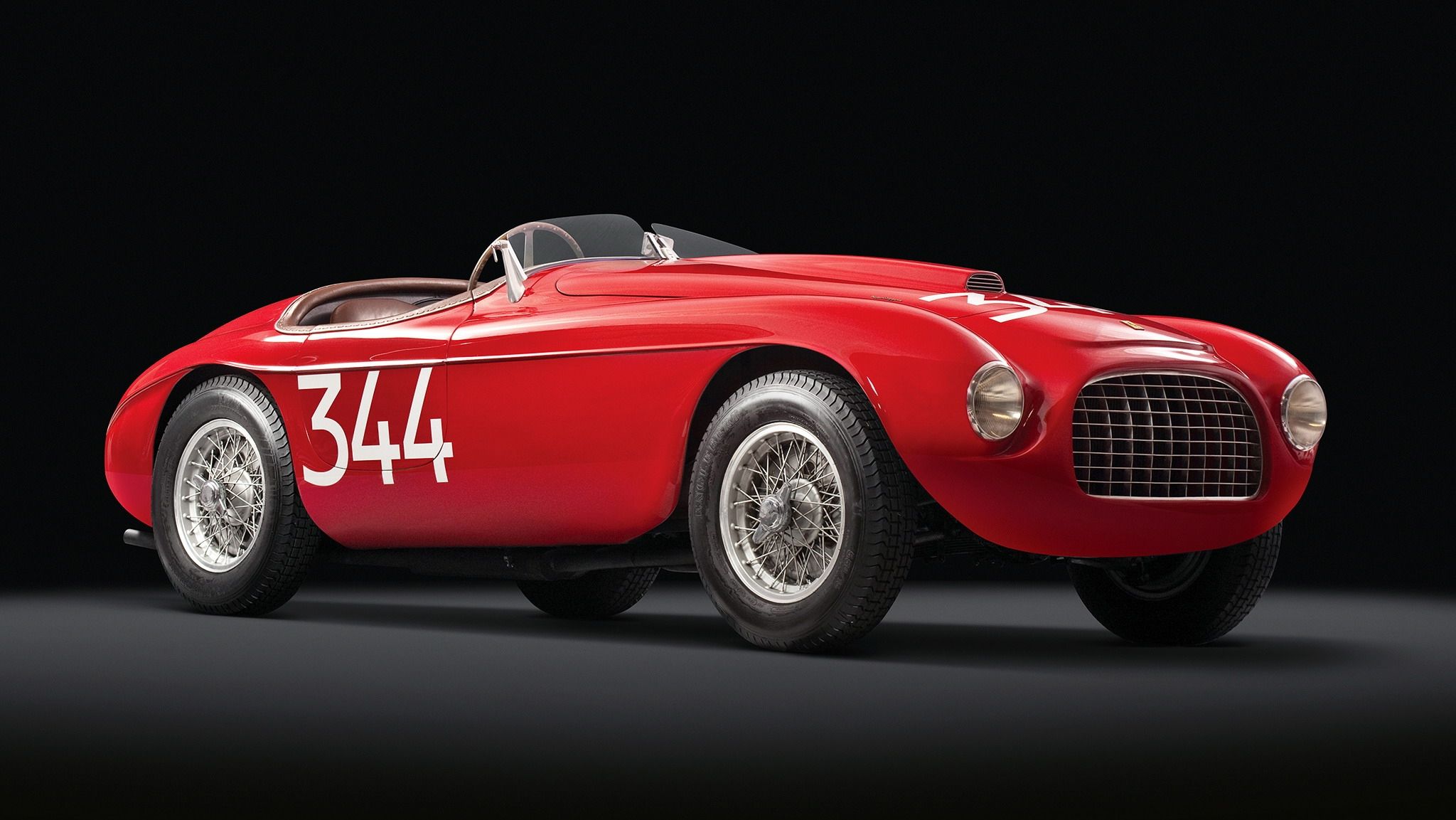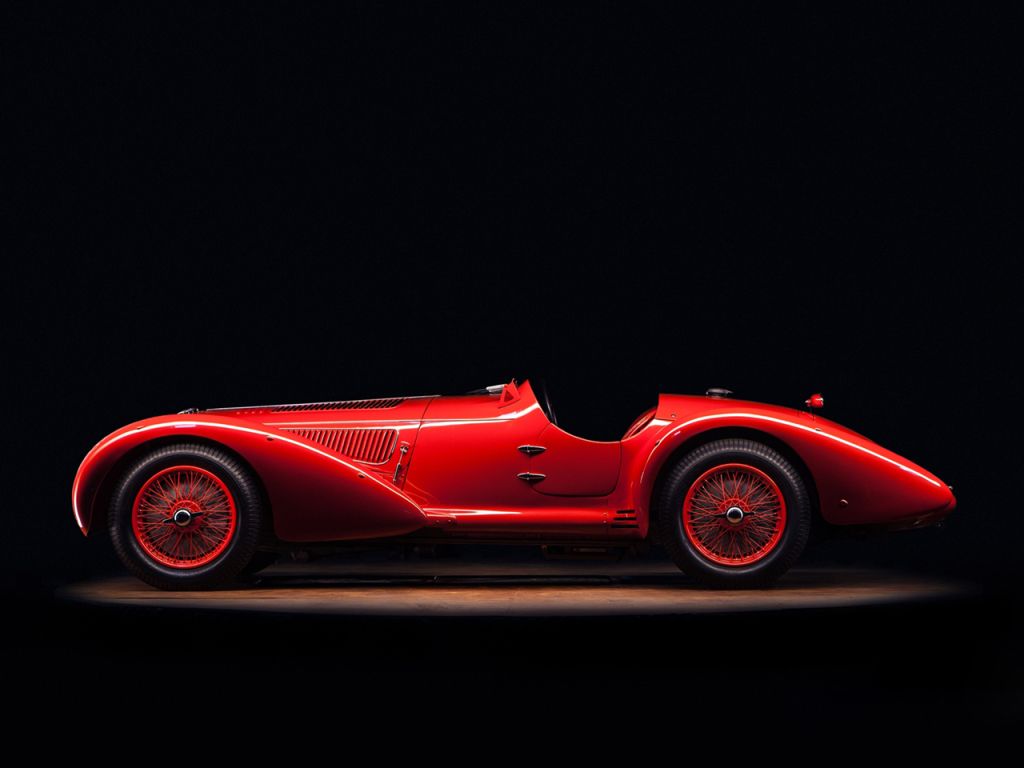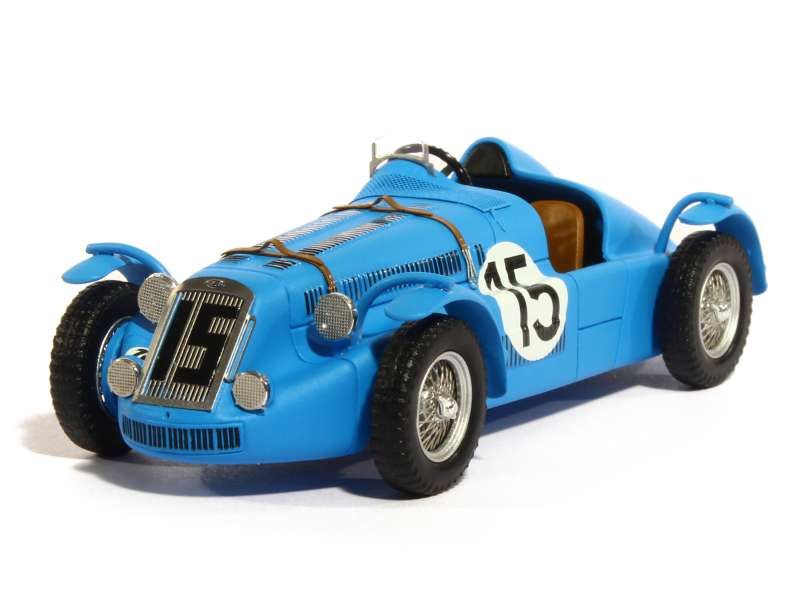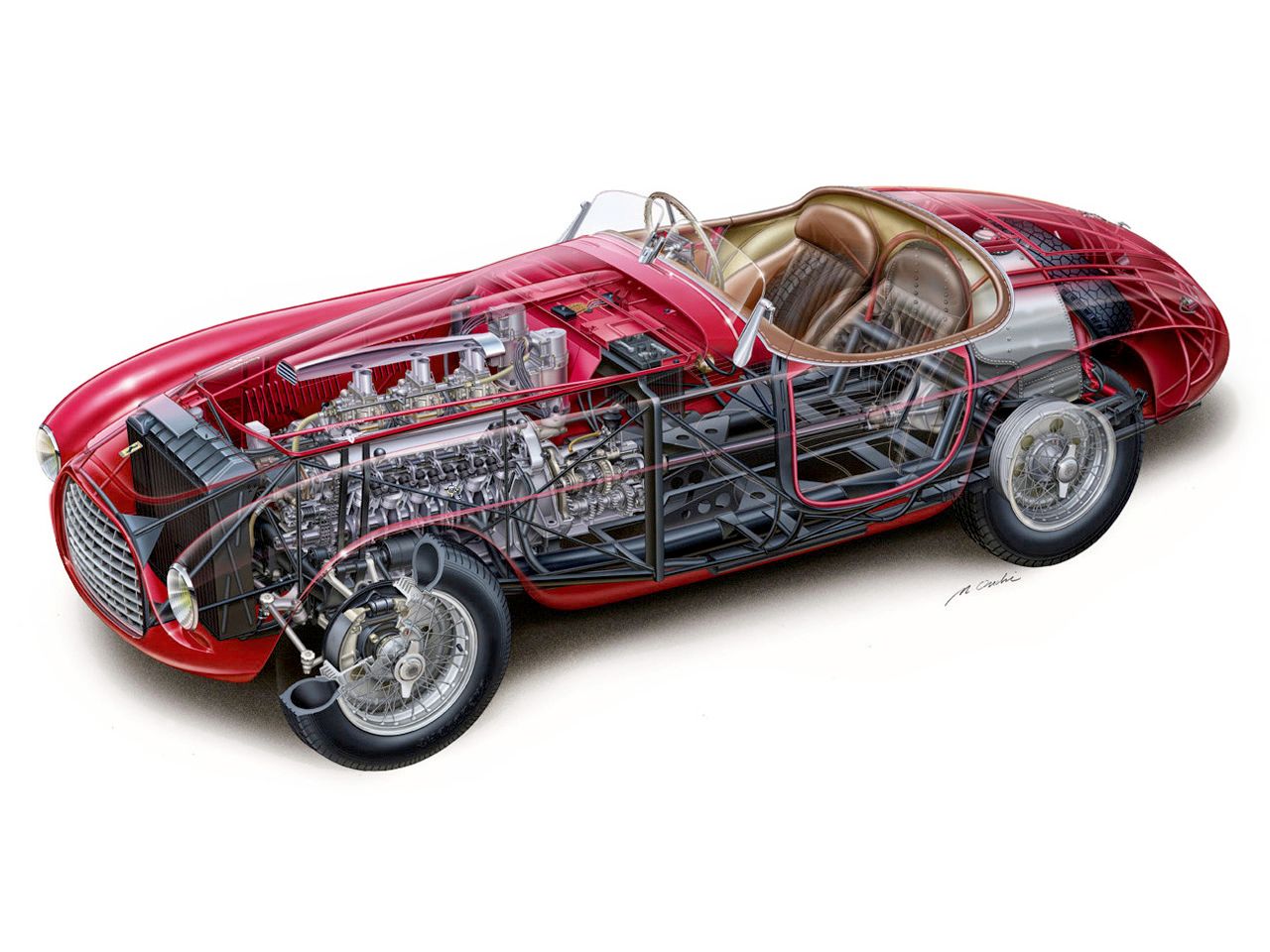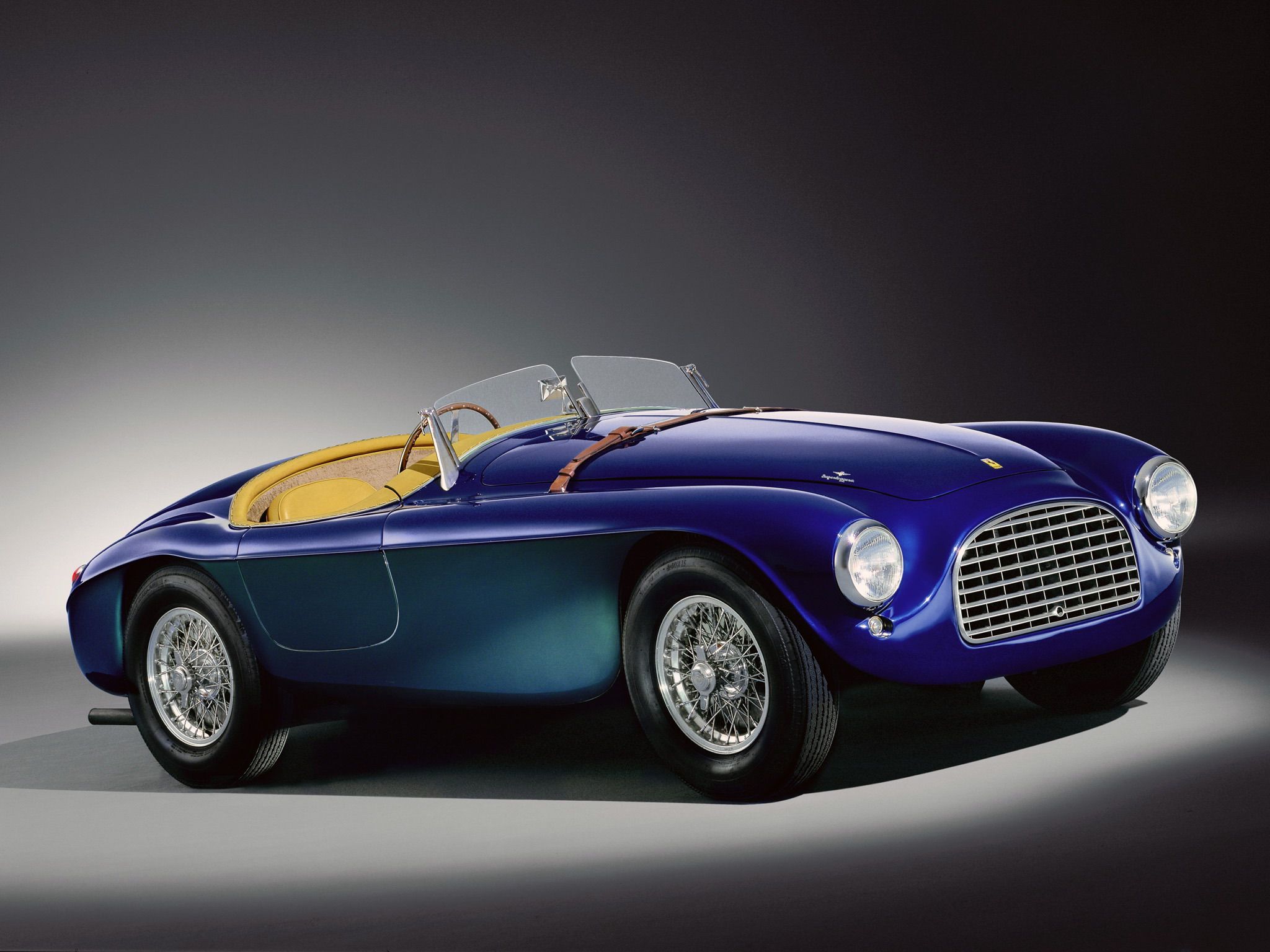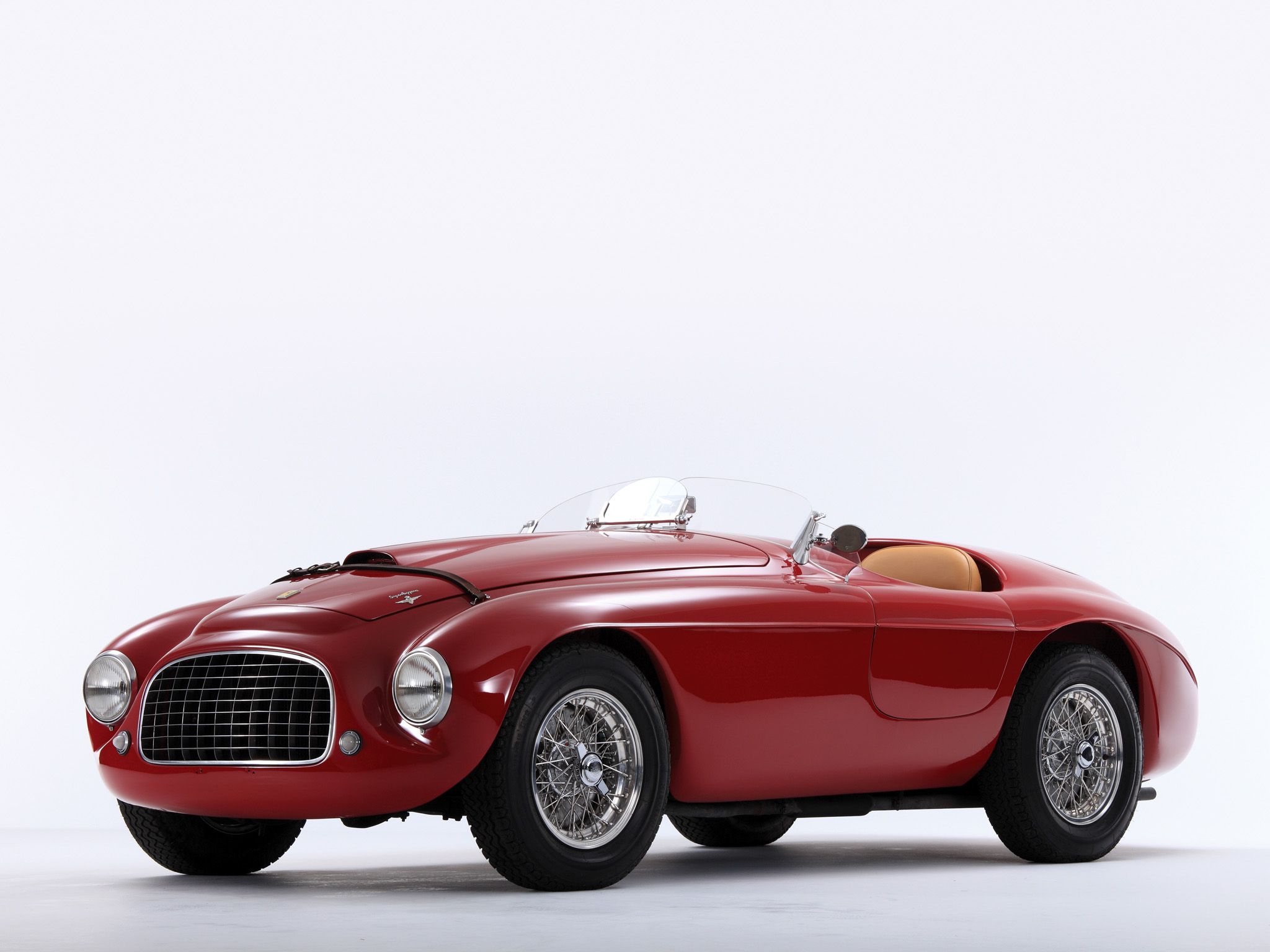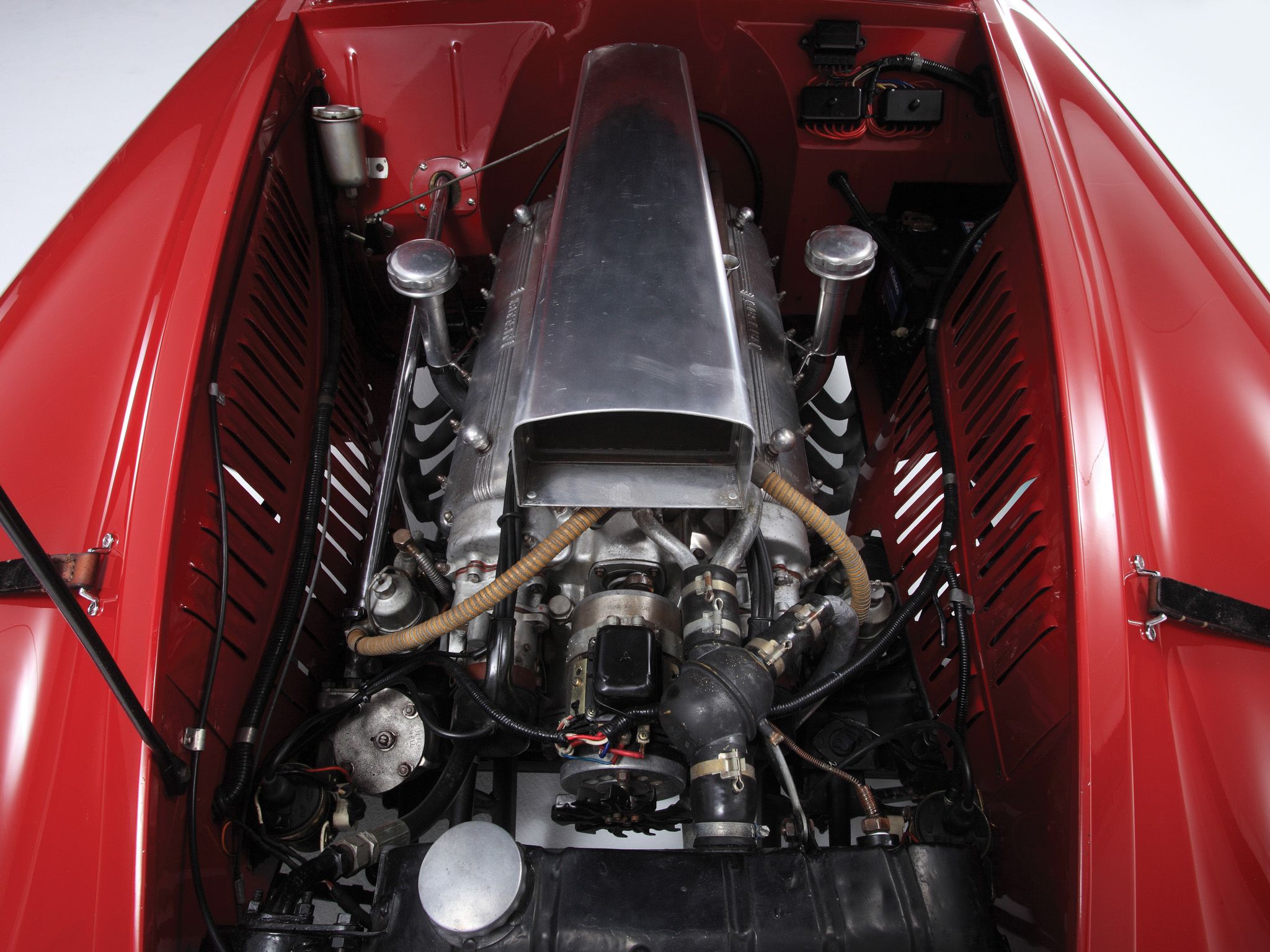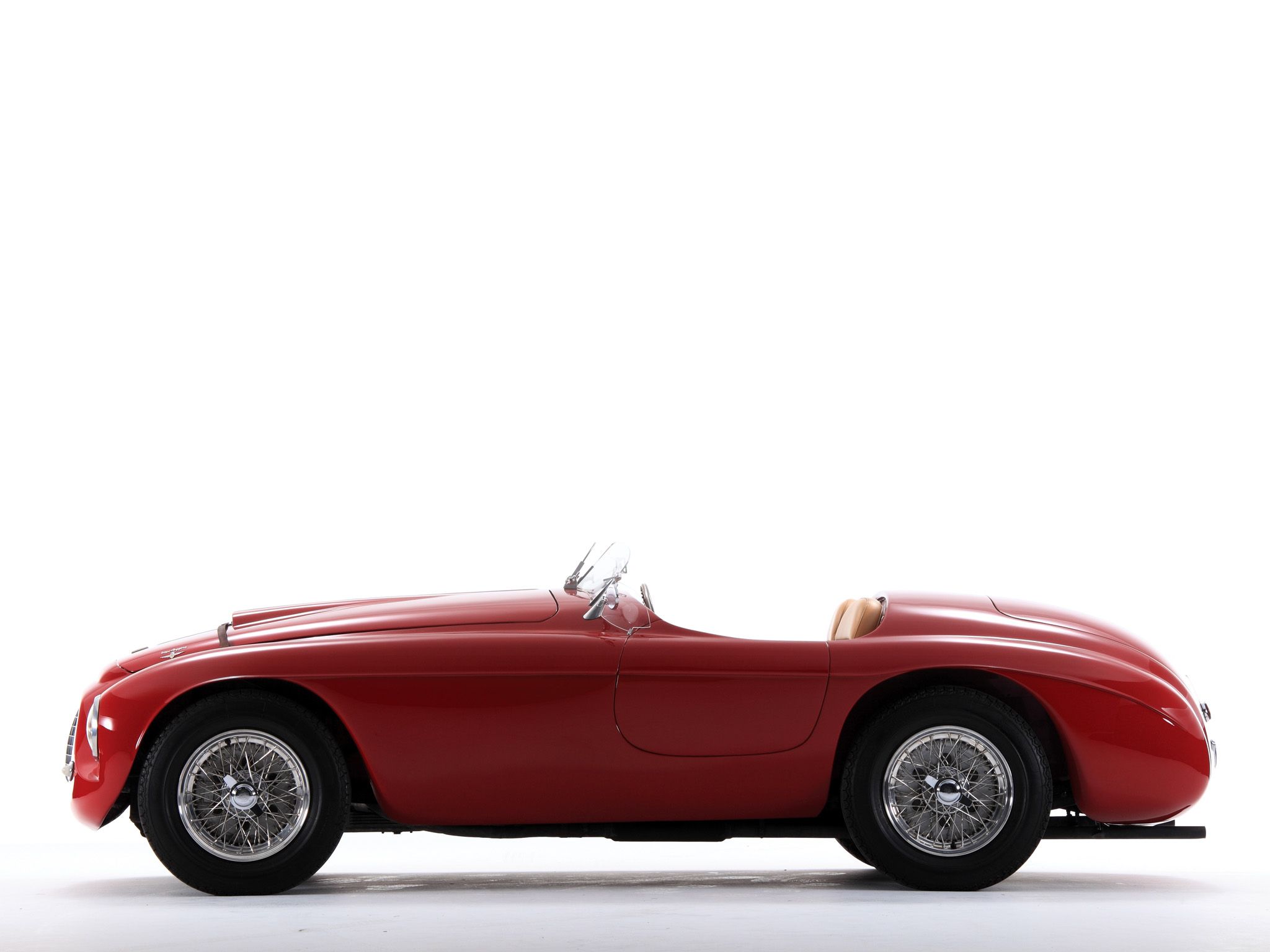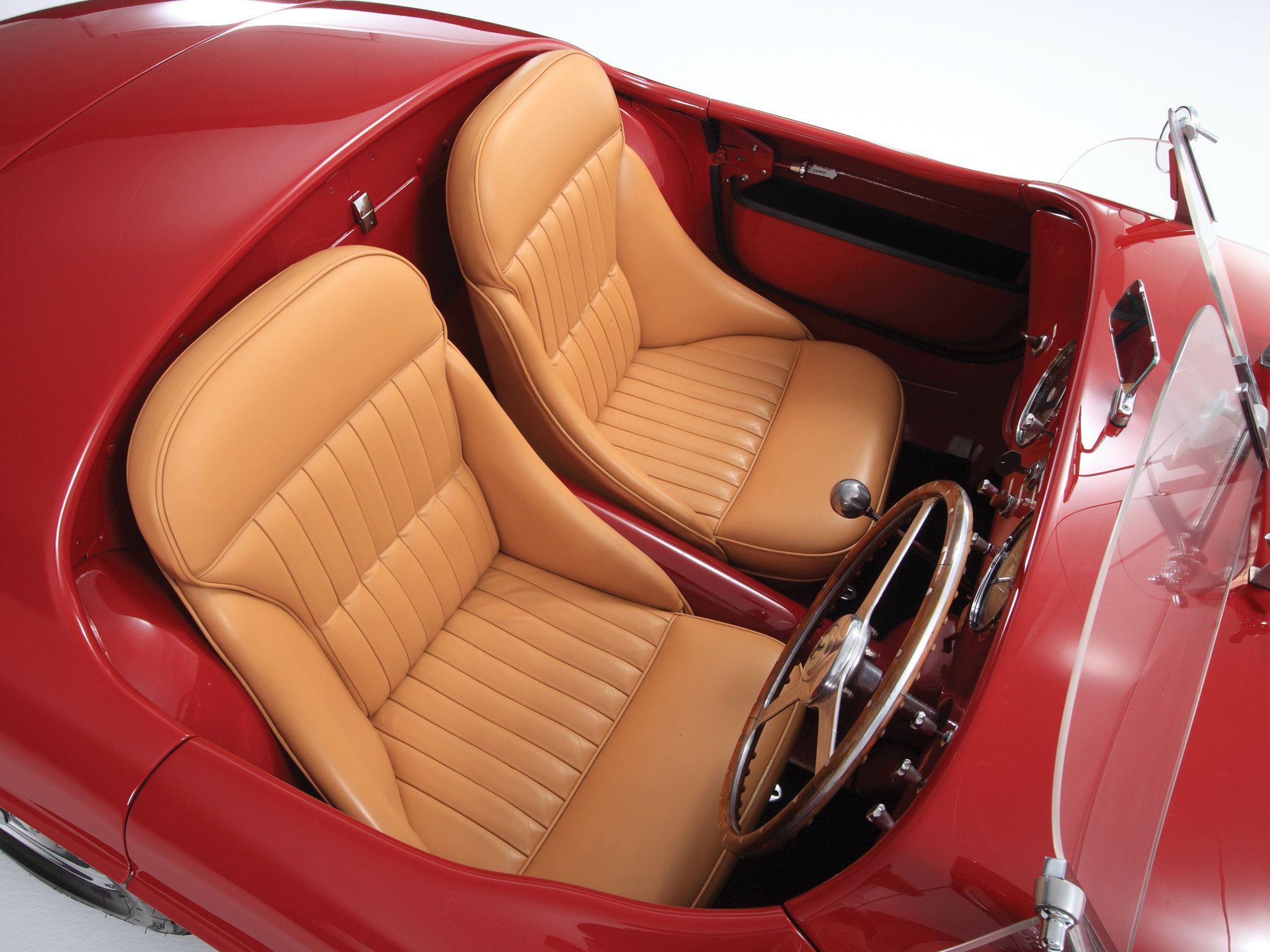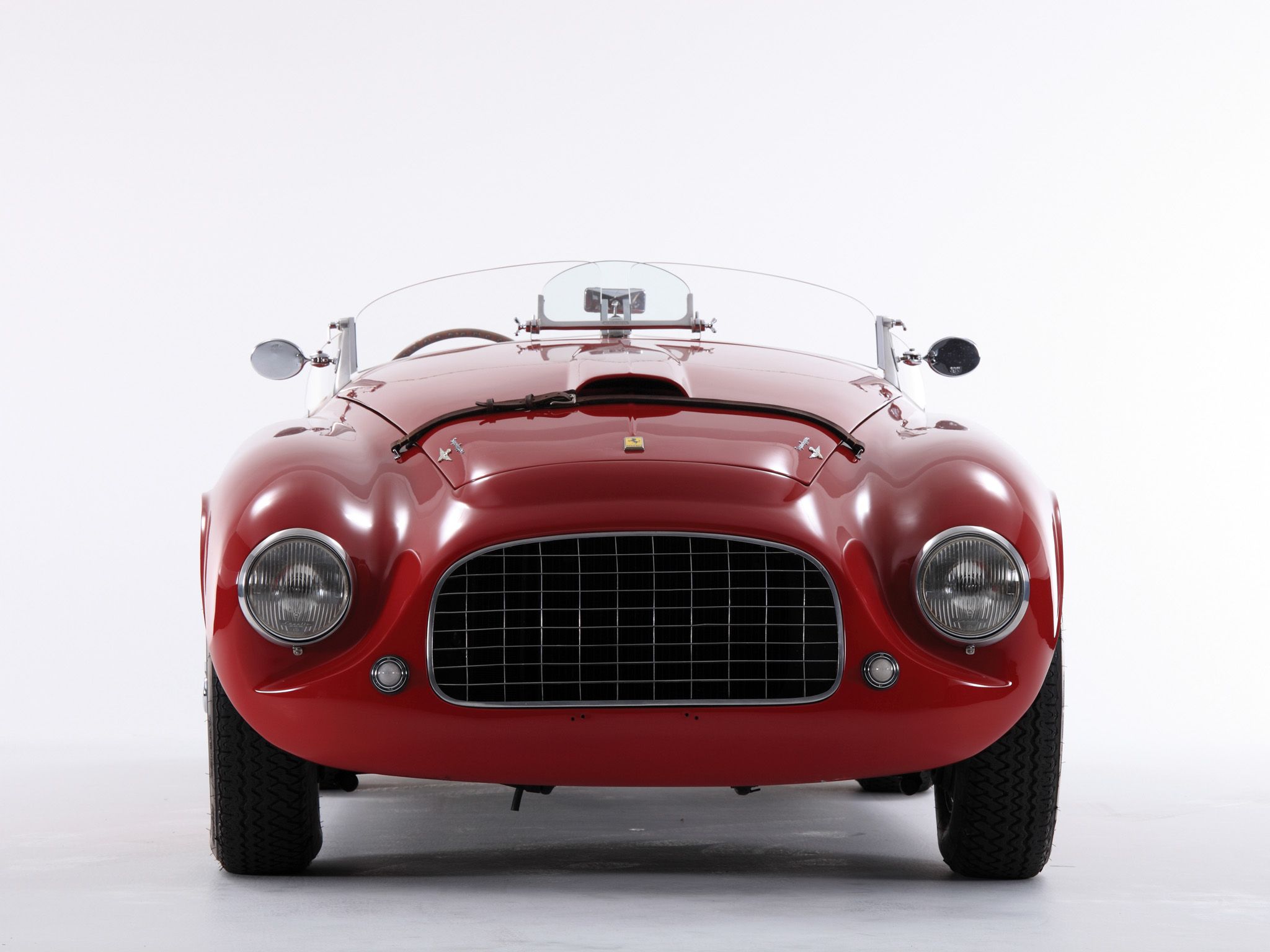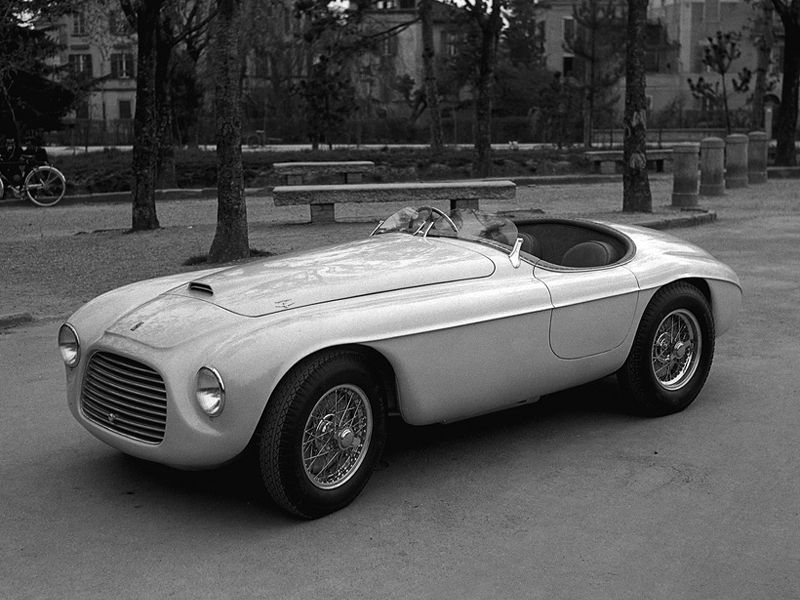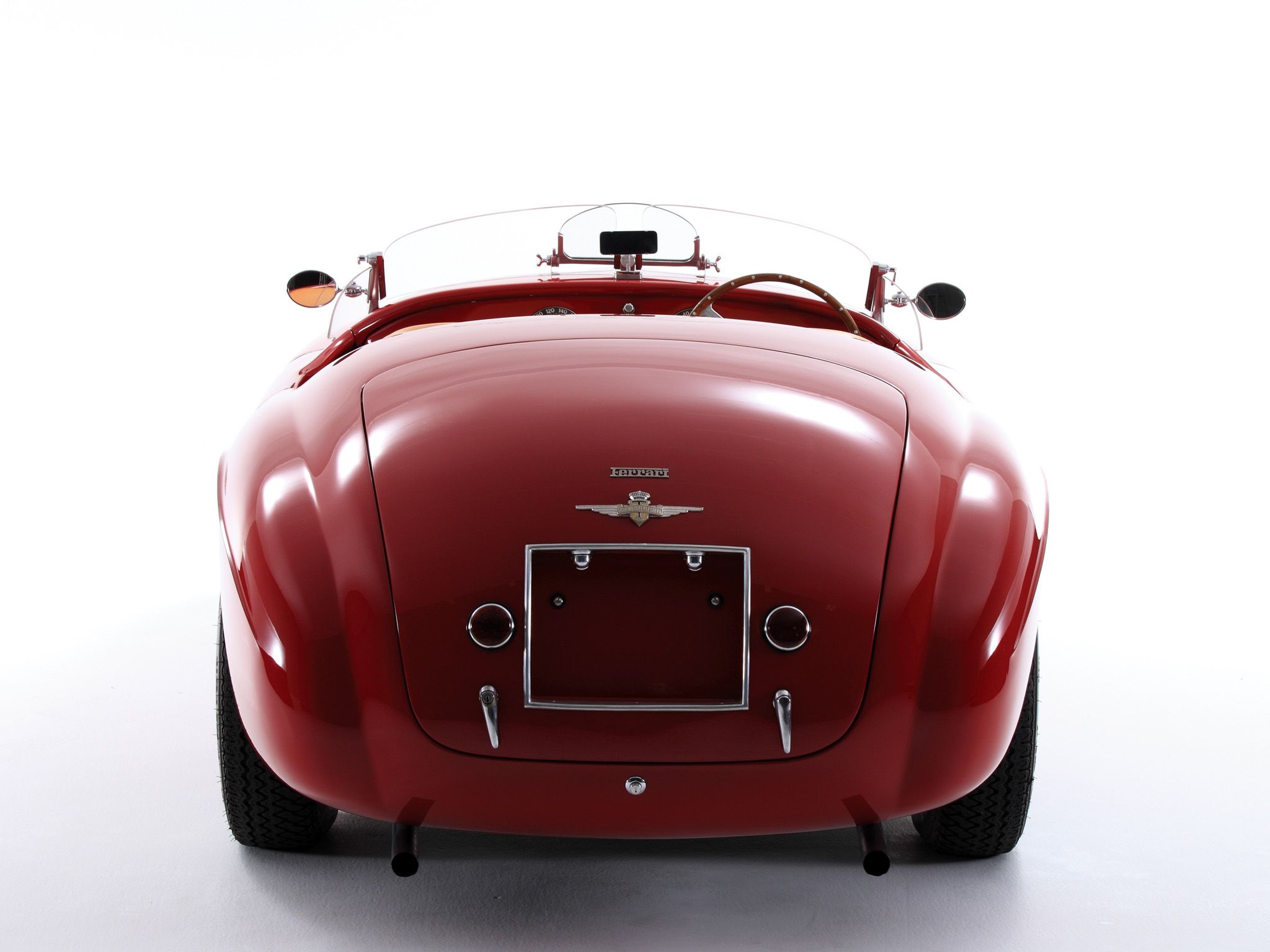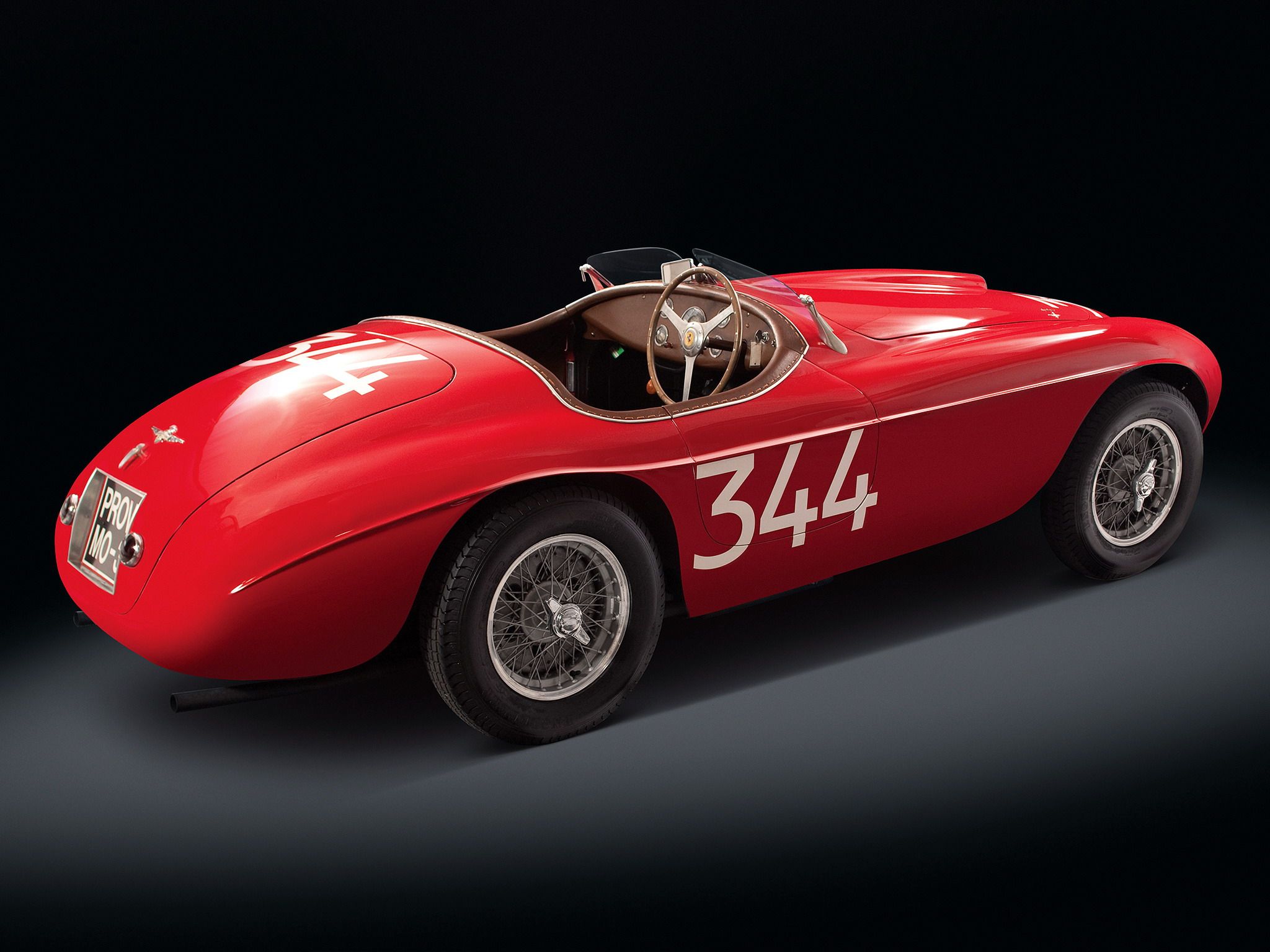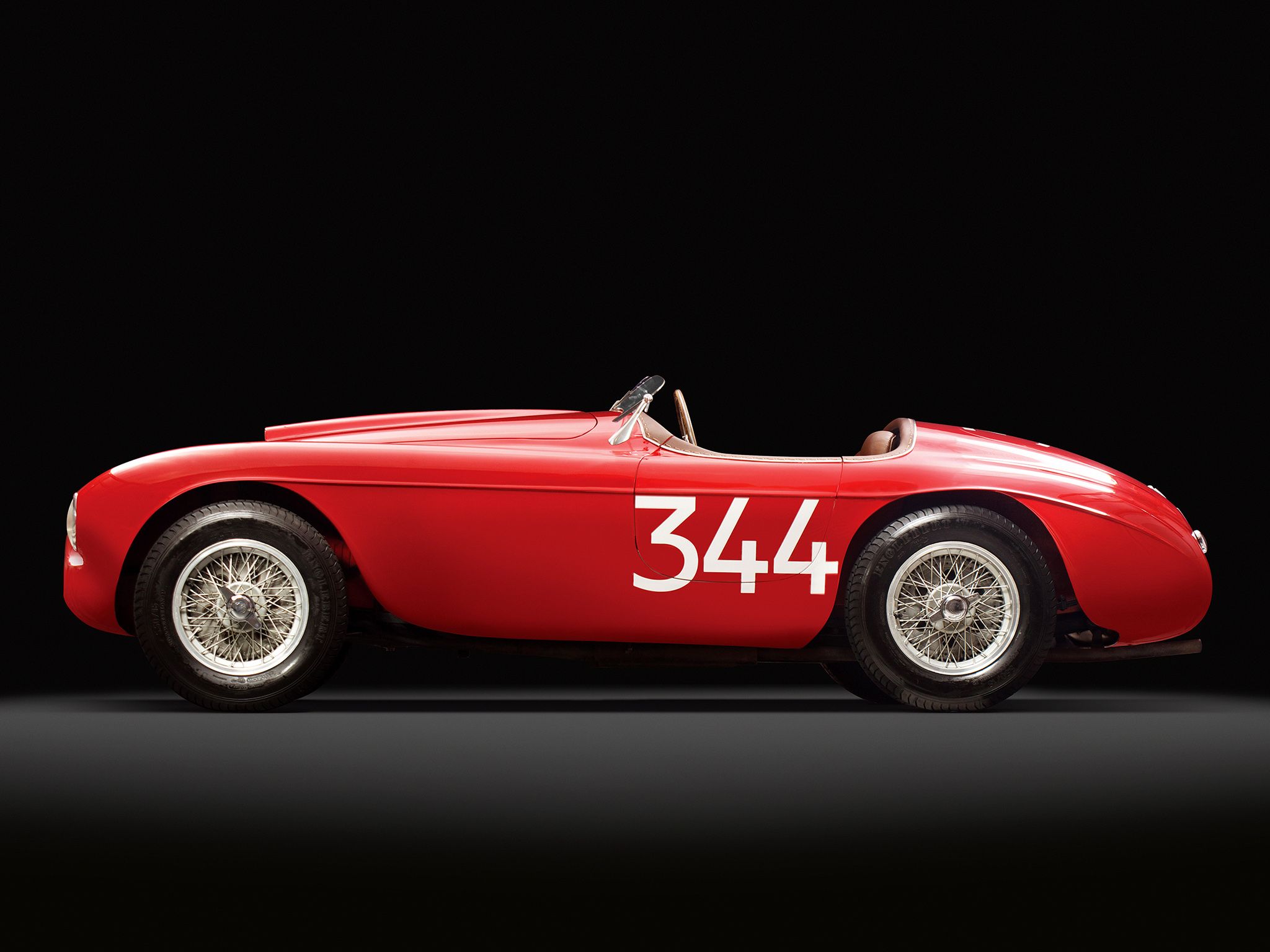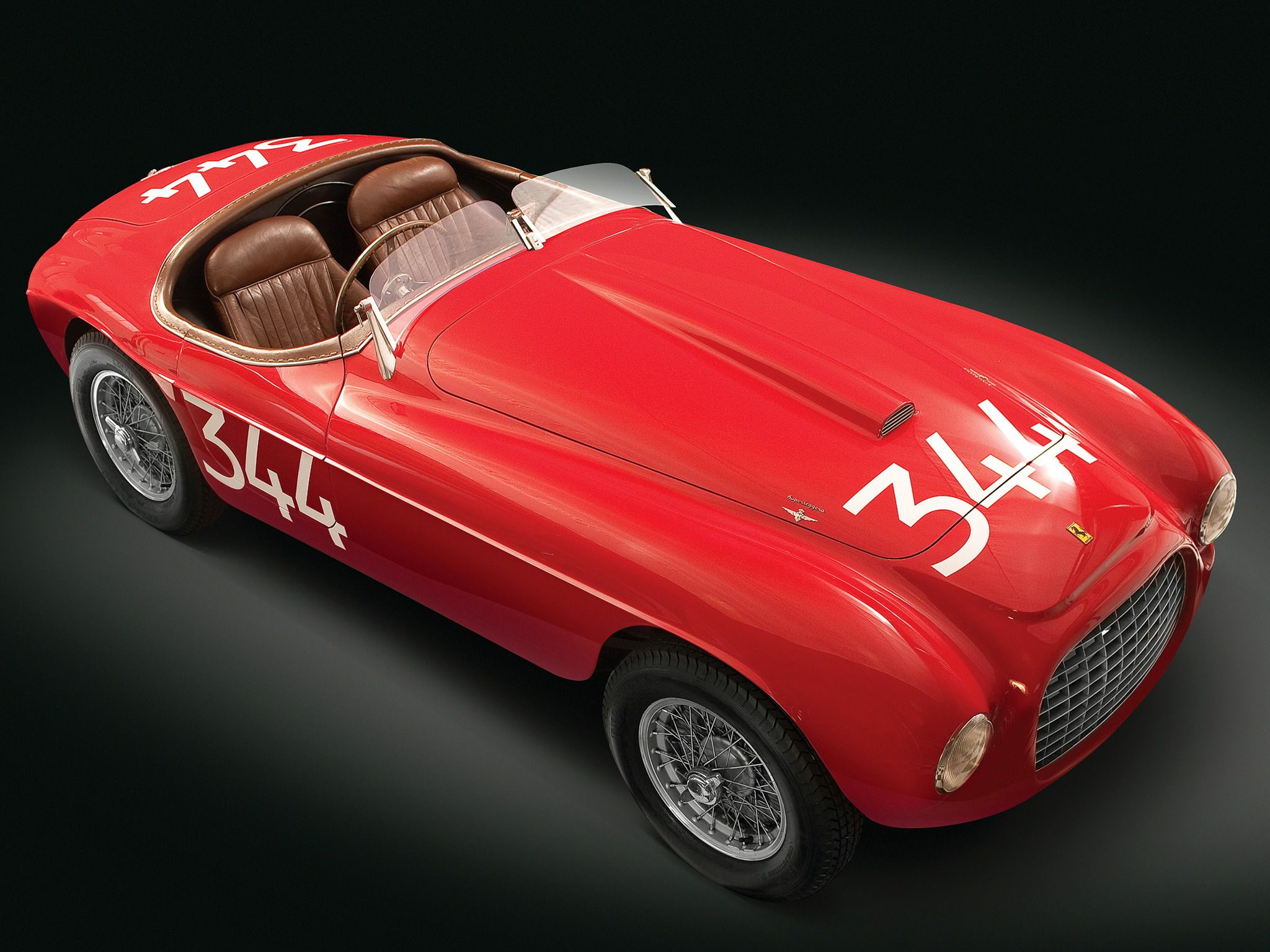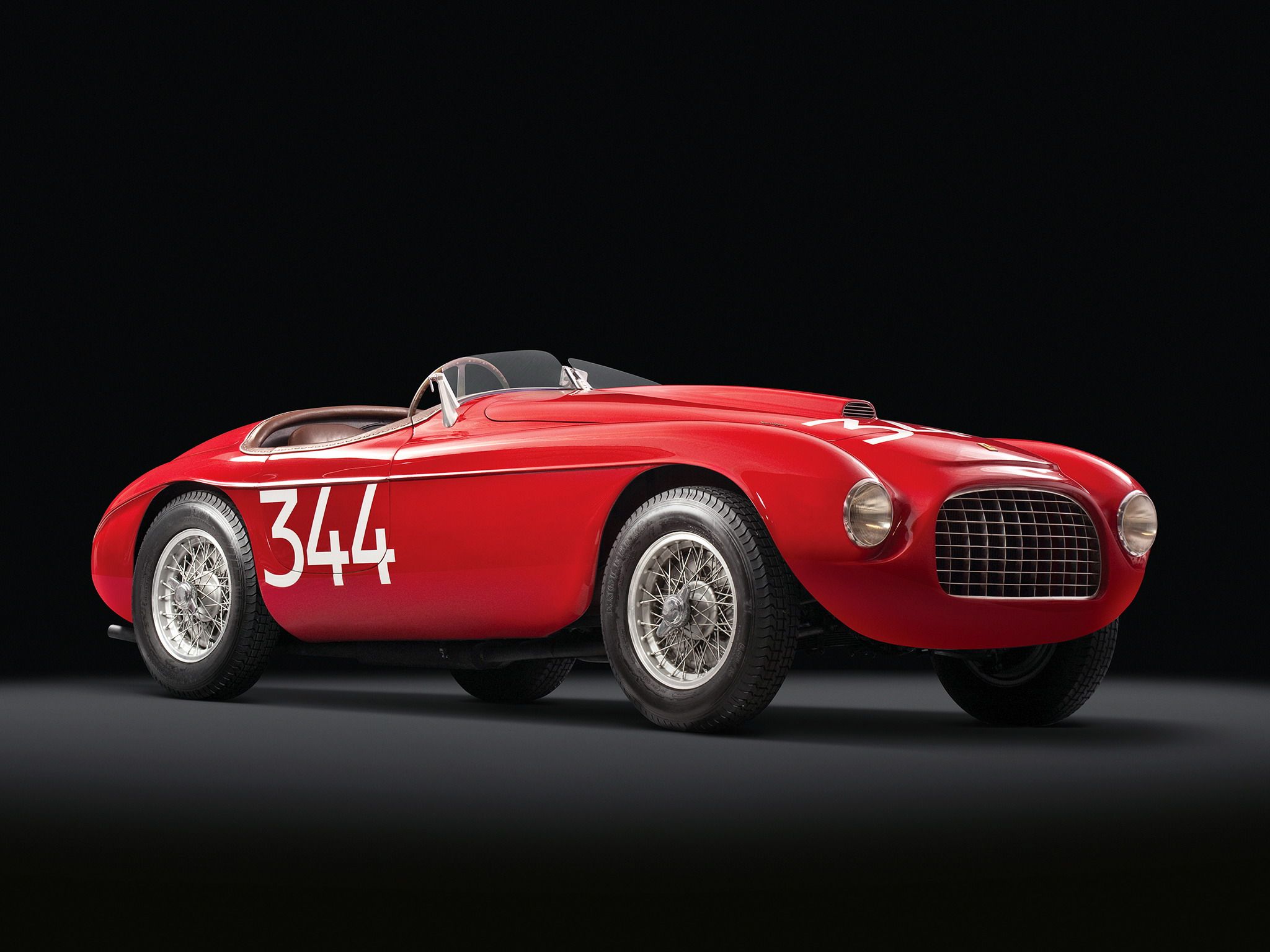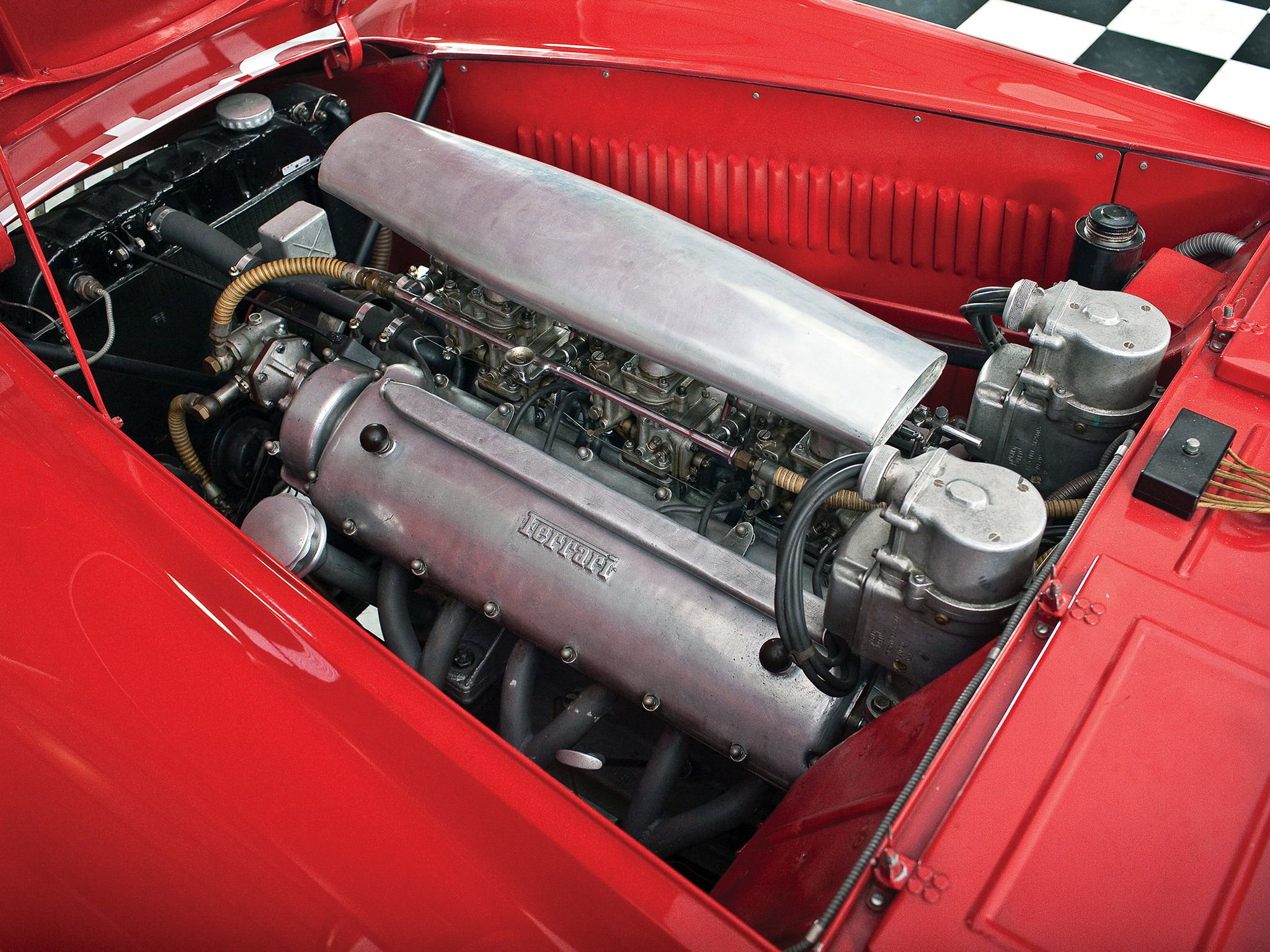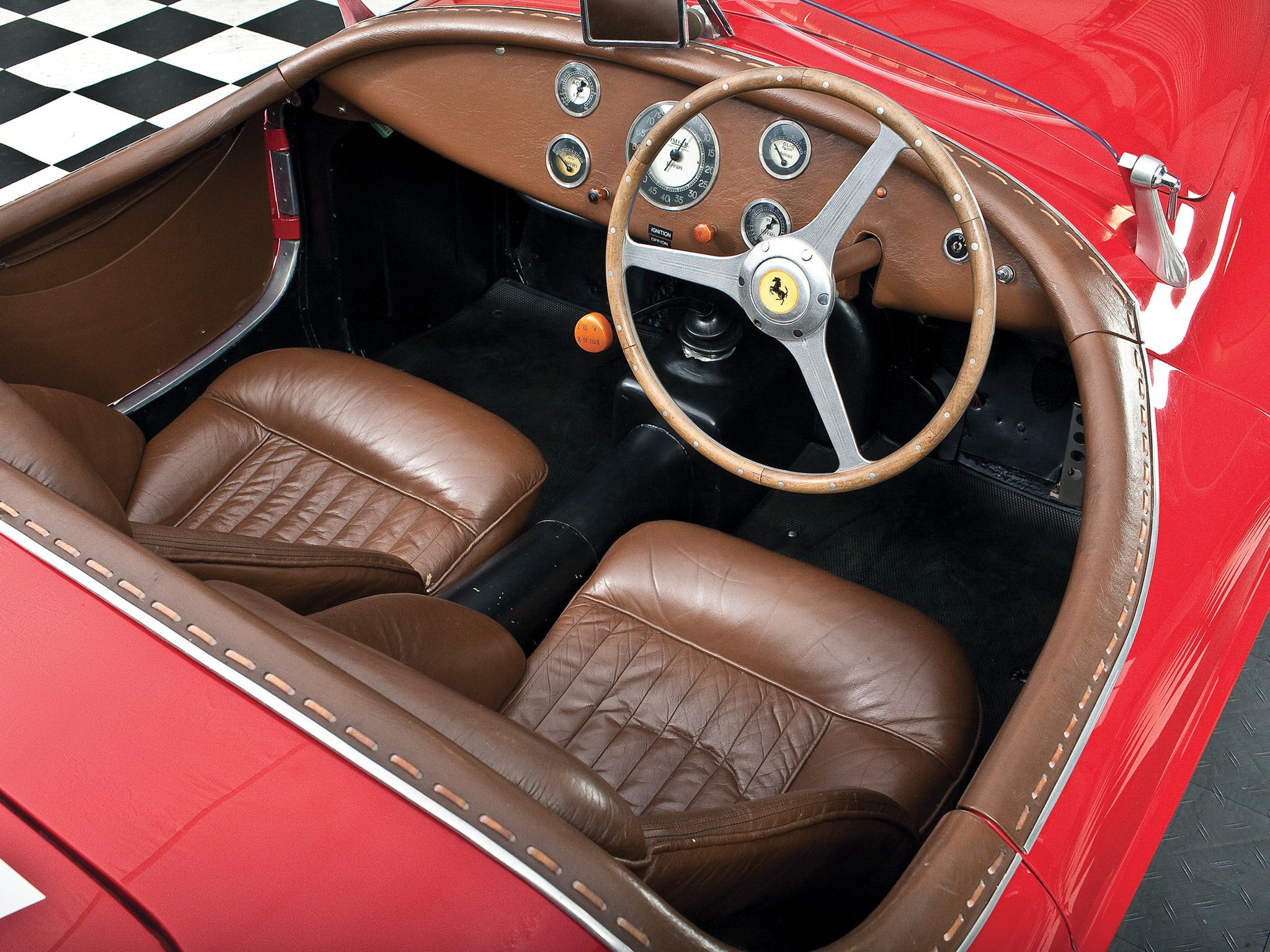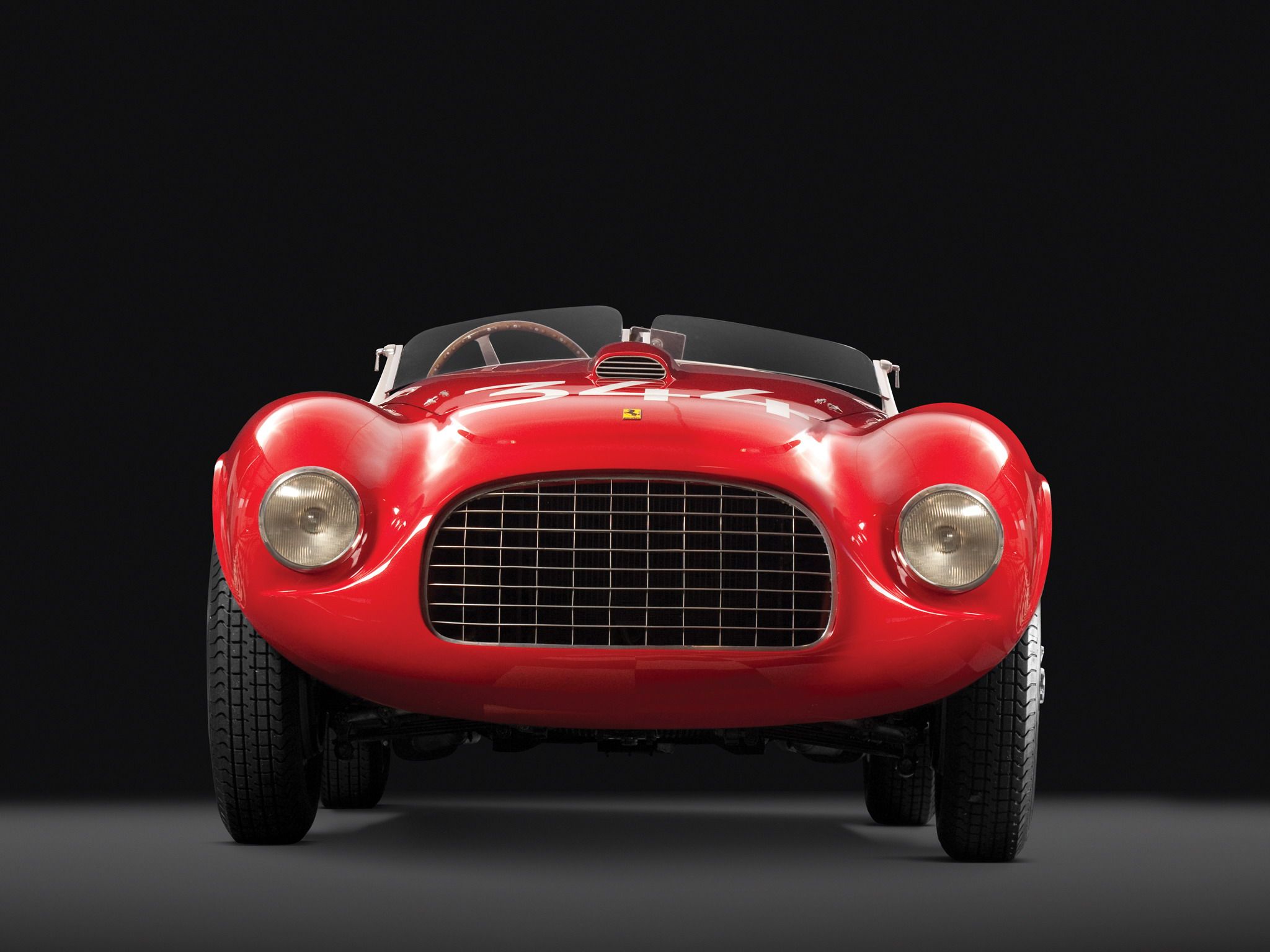Ferrari->ke252 was not originally founded with the intention of making road cars. Scuderia Ferrari was founded in 1929 as a privateer racing team, and was later made the Alfa Romeo->ke1386 works team. Due to friction between Alfa and Enzo Ferrari (surprise!), Ferrari would produce its first car in 1940. But this was just for racing, and it was only after rebuilding the factory following its destruction by Allied bombing in WWII that Ferrari expanded into building road cars. But, these early road cars only happened to be road legal. They were still built primarily for racing, and Ferraris from the '40s were mostly built in small numbers and with almost no amenities.
Early cars were built in very small numbers, with just two units of the first car, the 125 S, being made. And the second model was nothing more than a prototype, the 159 S. The first real production model was the 166,->ke3510 which existed in a few different forms. There was an actual touring car, Ferrari's first, and a couple of racing models. The first racing model was the 166 S, but this was soon replaced by the car you see here, the 166 MM, an evolved version of the S.
Continue reading to learn more about the Ferrari 166 MM Touring Barchetta.
1949 Ferrari 166 MM Touring Barchetta
- Make: Array
- Model: 1949 Ferrari 166 MM Touring Barchetta
- [do not use] Vehicle Model: Array
Exterior
The official name of the car was just 166 MM, with the “Barchetta” and “Touring” added later. Both of these terms relate to the bodywork, “barchetta” being the Italian for boat, a nickname given to the design by a journalist who simply enough thought it looked boat-like. The word “Touring” is used not because this was a grand touring car, which it wasn't, but because the bodies were built by Carrozzeria Touring, the couchbuilder famous for its “Superleggera” construction technique.
A word still in use today. This involved bolting aluminum-alloy panels directly onto a tubular steel space frame, and it made for a very light but also very strong setup. Since the 166 MM was a race car, the body is free of any adornment, and three units were even built with only one door.
Exterior Dimensions
|
Wheelbase |
2,200 MM (86.61 Inches) |
|
Front track |
1,250 MM (49.21 Inches) |
|
Rear track |
1,200 MM (47.24 Inches) |
|
Weight |
650 KG (1433 LBS) |
Interior
As you would expect, the interiors put into 166 MMs are all pretty basic. Still, there are a few different levels to this. There was a “Lusso” (luxury) option with fine leather and such luxurious appointments as two doors, but even these still weren't going to compete with actual GT cars. At the other end of the spectrum were the cars made with only one door. The 166 MM was made for long distance racing, and these examples were made for seriously long distance racing by removing the passenger seat and replacing it with a second fuel tank.
In all, with any 166 MM, it's pretty obvious that you're looking at a race car. Ferrari did see the case for a real road car based on the 166 though, and at about the time the 166 S was becoming the 166 MM, Ferrari also made 37 units of the 166 Inter, a GT car with a roof and everything. The sale of which helped to bring in some extra cash for developing race cars.
Drivetrain
The 166 MM used a 2.0-liter version of the Colombo V-12 that would see use in all of Ferrari's 12-cylinder models for several decades. This isn't the smallest version of the engine that ever existed, but it is almost hilariously tiny for a V-12, and puts you in mind of pistons the size of thimbles. Still, the engine was a tweaked version of the one found in the 166 S, bumped up to 140 horsepower thanks to 10:1 compression. And, no matter how much you want to laugh at it, that is a hell of a lot for a naturally aspirated 2.0-liter engine in 1948.
The MM in the car's name stands for Mille Miglia, the endurance race that was, at the time, one of the most important races in Europe and certainly the most important in Ferrari's home country of Italy. Ferrari had won the race in 1948 with a 166 S, so the new upgraded version of the car that debuted later in the year was given the name MM to commemorate this. The changes proved to be effective, and the 166 MM won the race in 1949.
Drivetrain Specifications
|
Type |
front, longitudinal 60° V12 |
|
Bore/stroke |
60 x 58.8 mm |
|
Unitary displacement |
166.25 cc |
|
Total displacement |
1995.02 cc |
|
Compression ratio |
10 : 1 |
|
Maximum power |
140 HP @ 6,600 RPM |
|
Power per liter |
70 hp/l |
|
Top speed |
220 KM/H (136 MPH) |
Prices
Ferrari only made 33 units of the 166 MM, and while this did represent a huge increase in production for the company, it's still not a very big number. Several of these were also converted into 212s or otherwise had the bodywork and/or interior changed, so prices will vary by a lot.
A few years ago they were selling for around $1.5 million, but sales in the past couple of years have been generally exceeded $3 million. Prices of all classic Ferraris have been up by quite a bit since 2010/2011, and are currently at all-time highs. The 166 MM is included in this, although investors should keep in mind that this sort of exponential growth is risky.
Competition
Alfa Romeo 8C 2900
The 8C might have actually been a prewar car, but in the years immediately following WWII, new cars were scarce, and really excellent prewar cars like the 8C were still winning races. The 8C took on then-new Ferrari racers in the 1947 Mille Miglia and still won, and it was the car to beat when Ferrari took the 166 S to the race. Alfa was also, at this point, a spiritual rival to Ferrari, since Enzo had driven for Alfa before the war, and even managed the works team.
Delage D6S
When the 24 Hours of Le Mans started up again in 1949, most of the cars at the front of the pack came from either Delahaye or its subsidiary, Delage. The Delage cars were the faster though, particularly the D6S, a race car based on the D6 road car. Although the D6 had been a prewar model, it got a reworking in 1946, and it would have been one of the only cars in Europe at the time to have any postwar parts at all. It wasn't quite enough to win the race, but it was the closest Delage ever got.
Conclusion
The 166 MM is an important chapter in Ferrai's story. It was the car that the first Ferrari GT was based on, it won the Mille Miglia and took Ferrari's first win at Le Mans, also in 1949. It might not have been the first Ferrari, but it is probably the most important of those early '40s models. It's the car that made Ferrari its reputation, and is as historically significant as it is an excellent machine.


